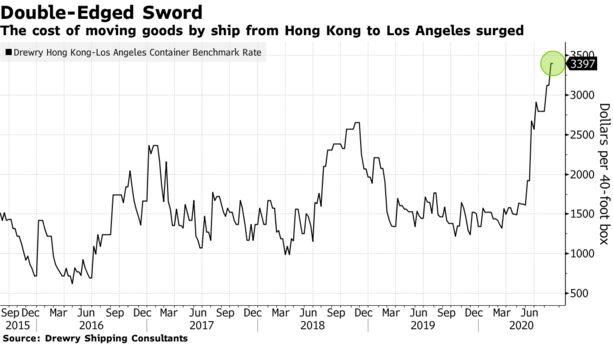The global bunker industry’s smooth transition into the low-sulfur era mandated by the International Maritime Organization has sent a strong signal to the sector that it can achieve its next goal of decarbonization equally free of hurdles, industry sources said.
“The IMO deserves credit as it was a [role] model to implement the regulation on an international basis,” Mitsuyasu Kawaguchi, general manager of crude oil and tanker department at Japanese refiner Cosmo Oil said at the 36th Annual Asia Pacific Petroleum Virtual Conference, or APPEC 2020.
In 2019, there were numerous discussions in the marine industry over how the transition to 0.5% fuels would pan out, with a lot of skepticism around VLSFO availability and VLSFO blends as it was expected they would increase operational problems and quality claims.
“What we’ve heard is that they [VLSFOs] burn better, they are cleaner and overall as long as you don’t have compatibility issues on your ship and are not unfortunate enough to get one of the fuels with sediments or unstable trends, they have been very good fuels,” Unni Einemo, director at International Bunker Industry Association, said at the same event.
Meanwhile, Gard, member of the international group of protection and indemnity clubs, said in a statement on Sept. 10 that the most commonly experienced problems with fuel reported to it were high total sediment potential and marginal exceeding of sulfur while the most common operational problems faced onboard was an increase in sludge formation in purifiers and filters.
However the operational problems have not led to a high frequency of major breakdowns or engine damage cases, it said. “Our data for fuel related machinery damage claims shows that the first six months of 2020 saw fewer claims than the same period in 2018 and 2019.”
“On the defence side, the number of case files opened this year on contractual bunker disputes is similar to previous years. So, from Gard’s perspective, the more dire predictions regarding potential engine damage, and a deluge of litigation between owners and charterers have not materialized, at least in this first six-month period,” it added.
So far this year, among all the samples tested by Lloyd’s Register, only 4% of VLSFO and 1.7% of MGO’s has been off-spec, Douglas Raitt, regional advisory services manager Asia at marine classification society Lloyd’s Register, told Platts earlier in September.
This is lower compared to the same period in the preceding year, Raitt added then.
Another aspect was the timely preparation.
“One of the key challenges was actually the maritime industry accepting that the IMO 2020 is here and rather than giving excuses, [one needs to] start early because it is the right thing to do,” Rajalingam Subramaniam, AET’s President & CEO said at APPEC 2020.
“We started using the LSMGO much earlier than the regulatory day,” he added.
Compliance to IMO 2020
Compliance to the rule has also been fairly good despite the challenges posed by coronavirus, or COVID-19, pandemic, industry sources said.
In the first six months of 2020, the number of port state control, or PSC, inspections dropped by nearly 40% due to the COVID-19 outbreak, Gard said.
“Despite that, detentions relating to SOx [sulfur oxides] regulations of MARPOL Annex VI were in double digits in the Tokyo MoU region, with the majority of those being for high sulfur content in the fuel,” it said.
PSC officers are generally aware of and following the IMO guidelines, Gard added, citing its involvement in some of those cases.
The narrowing HSFO-VLSFO price spread brought about by COVID-19, has also prompted shipowners to use more LSFOs, aiding compliance, some industry sources said.
The huge amount of gasoline demand destruction brought large amounts of vacuum gasoil to the middle distillates pool, easing VLSFO prices, Kawaguchi said.
However, Kawaguchi noted that the spread had likely bottomed out. Some sources also resonated this sentiment as, with the easing of lockdown restrictions in many countries, a recovery was underway.
Decarbonization
Meanwhile, with the IMO greenhouse gases emission cut targets looming, decarbonization has become a focal point for the industry, some sources said.
The IMO, in April 2018, laid out its strategy, aiming to reduce the shipping industry’s total GHG emissions by at least 50% from 2008 levels, by 2050, and to reduce CO2 emissions per transport work by at least 40% by 2030.
Ammonia, hydrogen, LNG were among the various alternatives being discussed by several sources at APPEC 2020 to tide over this regulatory challenge.
AET Tankers, for its part, has already invested in dual-fueled LNG technology although LNG was still a transition fuel, Subramaniam said.
The parent company of AET Tankers — the MISC Group — is also part of a joint development project, or JDP, for an ammonia-fueled tanker to advance shipping’s drive towards decarbonization, he said.
“COVID-19 is a massive reset in the industry, It is like a safety car coming in the F1 [Formula 1] race,” Subramaniam said.
Moving forward, the industry will have to adopt a more collaborative approach to stay relevant, he added.
Source: Platts






